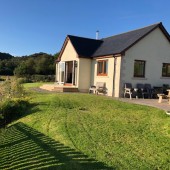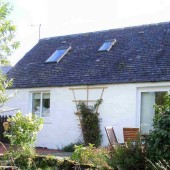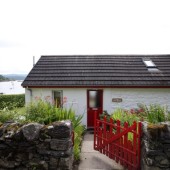Part 5
 This century has seen a fair amount of building in and near Tayvallich. Four council houses were put up in 1932, and the Scotnish proprietor modernised the cottages at Kentallen two years later. Four more council houses were erected in 1955, and some ten years later two dwellings were built by private owners.
This century has seen a fair amount of building in and near Tayvallich. Four council houses were put up in 1932, and the Scotnish proprietor modernised the cottages at Kentallen two years later. Four more council houses were erected in 1955, and some ten years later two dwellings were built by private owners.
Until 1924 the village had no hall, and all functions took place in the school, though on summer nights the young folk of the place would gather over at Carsaig green in the evenings and had a merry time dancing to the bagpipes or melodeon. In that year however the community was presented, by the owner of Scotnish, with an army hut from the first world war, which served us well until after the second world war when it was felt to be inadequate, and money was gathered for a new one. This was completed in 1955 and lately has had a small addition in the form of a better kitchen. It is a very good hall and we are very proud of it.
Many a good shinty match has been played and watched on the green at Carsaig, but interest in this fiery Highland game is dying out with the coming of the popularity of football.
At the turn of the century there were three schools in the district; one was part of the Free Church at Carsaig, one was at Auchentenavil, and one was on Ulva. From Tayvallich, the children of Free Church families went to Carsaig and the others to Auchentenavil, and it is said that there were many battles between the two factions when they met coming out of school! Ulva served the farms and cottages too far away to attend either Tayvallich or Carsaig, and it was closed in the 1920’s. The Free Church school was demolished along with the church itself, so that Auchentenavil remains the only one for the neighbourhood. At one time there were 72 children in school. Now the numbers are reduced to twelve. We are, alas, not only a declining but ageing population.
Electricity has come slowly to Tayvallich. A few householders had their own private plants, but there was no mains electricity supply until 1955 when the North of Scotland Hydro-Electric Board brought the power to the village and a switch-on ceremony was performed in the newly built village hall. Now the whole district is supplied, and the line goes across the Sound to Jura and Islay, bringing them, too, the benefits of electric power. Gone are the days of candles, paraffin lamps, and bottled gas, and if we sometimes grumble at the power cuts and breakdowns when they come at awkward times, few of us would want to go back to the old ways, and even those who thought electricity quite unnecessary now wonder how they even managed without it.
Public transport consists of one bus a day to and from our shopping town of Lochgilphead. This bus carries the mails and goes on to Ardrishaig to meet the passengers and goods arriving by boat from Gourock. Before the war, and during it, when petrol was rationed, most of us used this way of getting into town, but now nearly all have cars and the bus carries fewer. Goods transport is by British Road Services who give us a once weeklydelivery. Our nearest railway is over 40 miles away.
For some years a well known sight on the road in summer was a coach and horses which plied once a week from Ardrishaig to Tayvallich carrying visitors on a pleasure trip. This was a day’s outing, leaving Ardrishaig in the morning, spending a few hours in Tayvallich, and returning in the late afternoon. This trip is now discontinued, and the coach itself reposes in the Museum of Transport in Glasgow.
Before the war not many houses had a telephone, now there are few that do not. In 1937 a kiosk was put up at the Danna road end in response to a request from the houses in the immediate neighbourhood, but since most of these now have the telephone installed the kiosk was not enough used and was removed some years ago.
A Queen’s District Nursing Association was formed in 1898 and the nurse who served most of the parish of North Knapdale came to live in Tayvallich in 1907. The Association, run by a local committee, flourished until 1948, when the National Health Service made it redundant. We still have our nurse living in the village; our Doctors reside in Lochgilphead.
A recreation club was formed not long after the last war and meets once a week in the winter months. This began as a Youth Club, but proved so popular with those inhabitants who were not so young, that the name and rules were changed and now anyone of any age or either sex may join.
We also boast a very flourishing Amateur Drama Club with an enthusiastic membership.For the last three years we have produced a Pantomime at Christmas, and a selection of one act plays in the spring.
During the summer most people are busy out of doors, or entertaining or catering for the many visitors who love to spend their holidays in Tayvallich. Many houses are let for the summer months, the bay fills with small boats of all kinds, and the two caravan parks do a brisk trade. It is perhaps rather a sad sign of the times that many of the houses that fall empty are bought by those who come here only for holidays, but such is the attraction of this beautiful district that visitors enjoy and admire it in spite of the climate which is mild, wet and windy.
We do not experience the hard frosts and long lying snows of eastern and central Scotland except on rare occasions, but our rainfall is in the neighbourhood of 50 inches per annum, the wettest months being October to December. The growing season is long, usually from early April to the end of October. We do have gales of great violence which in the past have done a lot of damage. The old houses were solidly built to withstand these great winds, and in many places one can see the effect of the prevailing westerlies in the growth of the older trees.



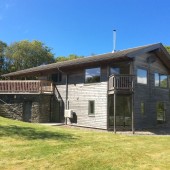
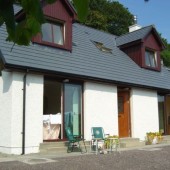
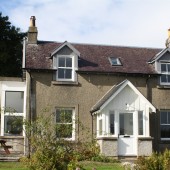
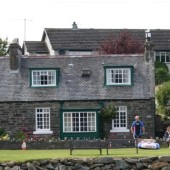
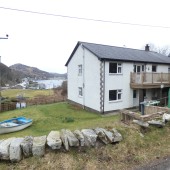
_baef36edc53bdd009ca06069d3b23fda.jpg)
